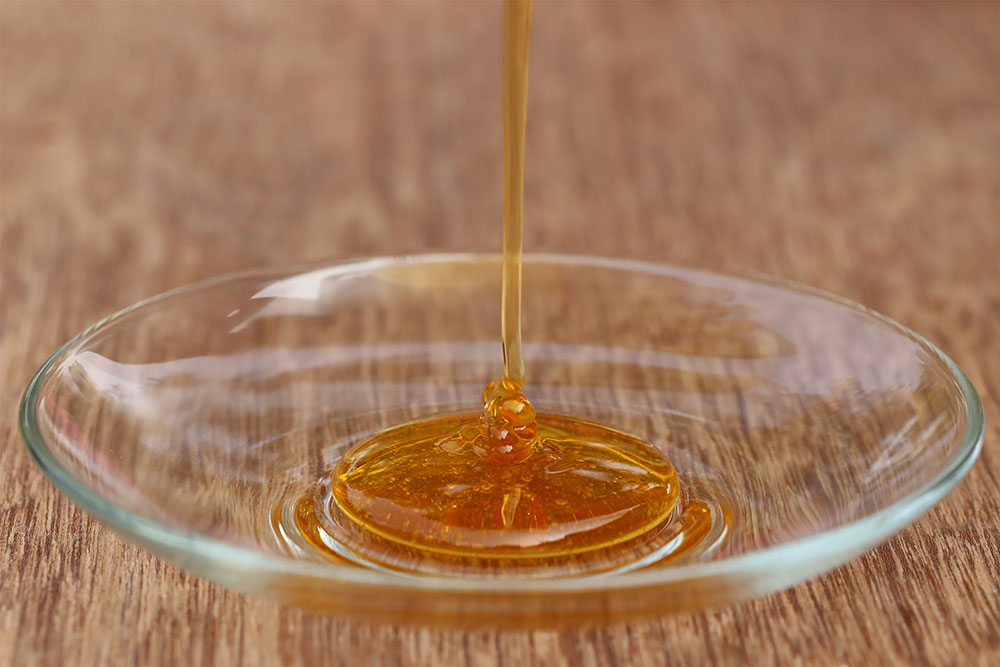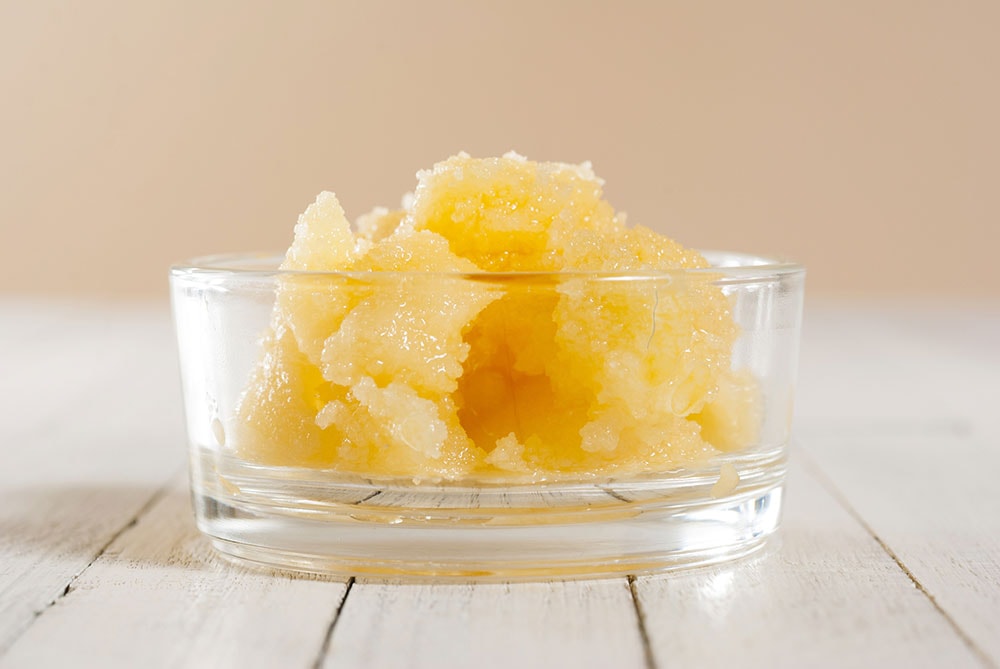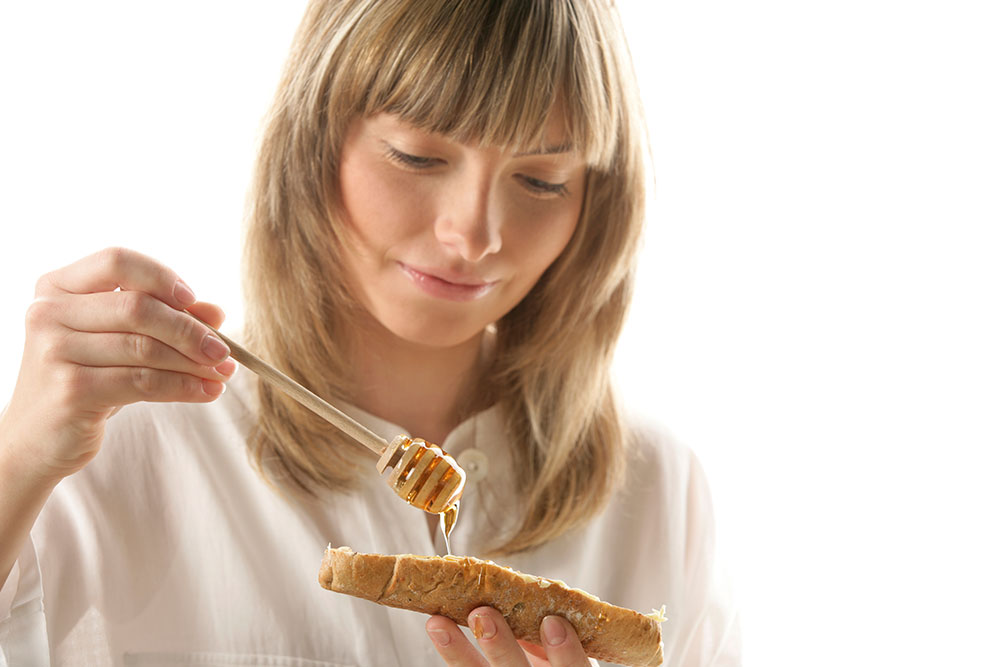Product
How to distinguish a natural honey from a low-quality one
Colour and thickness

The first thing we should pay attention to while choosing honey is its colour.
It differs according to its main honey plant. Acacia and linden are light and clear. After the process of crystallization, linden honey loses its clarity and becomes thick. Acacia honey can stay liquid for two years. Young buckwheat honey is of dark golden colour, polyflora and sunflower honey are sunny just as if they absorbed the warmth of a joyful beams.
While the process of crystallization colour and thickness changes.
Buckwheat changes its colour to dark amber and gets much thicker. Polyflora and sunflower honey change too – they lose their liquidity and plasticity.
The attribute of a qualitative honey is a homogeneity of colour and consistence.
There must be no extra inclusions – flues, parts of insects, blurred areas. A high-quality honey does not delaminate, there is no membrane, tarnish or liquid on its surface.
Freshly collected honey that is not crystalized yet is a ropey figurable mass. While transferring honey from cup to a cup, a tape-like jet appears which falls pyramidly in piles on the bottom and slowly spreads. As you fill the cup, the piles do not disappear – honey jets continue laying and gently dive into general honey body.
While rolling a spoon in the honey, it lays in a layers all over the spoon and do not spills off or drops.


A crystallized product is a homogeneous mass of a thick consistence without an extra inclusions and a lamination. It consists of a small equal sugar crystals, which are tightly connected with each other.
The period of crystallization firstly depends on a honey kind and on correctness of its keeping.
Smell
A sour smell tells about the fact that honey underwent fermentation.
Despite this, some of the honey kinds has sour hints it their smell. In such cases attention is paid to the honey’s consistence and its looking. Fermentation starts if honey was pumped off not ripe enough. Also honey undergoes fermentation in case of incorrect keeping (extra humidity makes honey absorb water and so it starts fermenting).
Caramel notes tell about the fact that honey underwent a high-temperature heating. While heating the product loses its healthful characteristics – biologically active components are being destroyed because they are vulnerable to thermal processing.
Immoderate heating of honey can cause an appearing of a dangerous cancer-causing chemical in its structure - hydroxymethylfurfural.
This method is used to create an illusion of decrystallization or a freshness of a product, as the majority of honey kinds have a liquid consistence only the first few months of a product existing – everything depends on the honey kind and its crystallization speed.
Depending on the conditions of a honeyflow and honey ripening the smell can be both very vivid and less intense. But it must have flowerish motives. Sometimes the notes of aromatic honey plants can be distinguished.
Taste

The taste of a real honey never deceive – it bitters and rasps the throat sometimes even with a slight feeling of burning.
The evidence of a taste depends on a honey kind – some have a slight bitter hint on an aftertaste stage. In such honey any foreign taste addings are absent.
A vivid sour taste shows the presence of water and the fact of fermentation. Mostly it happens in cases of pumping off of an unripe honey which contains a lot of water. While maturation the water almost totally exhales.
The honey, which contains sugar tastes very luscious and there is no bitterness at all.
How to check a quality of honey in experimental way
Mostly they add water to make honey more liquid and to increase the volume; add chalk, starch or flour to improve the consistence and to raise the volume.
